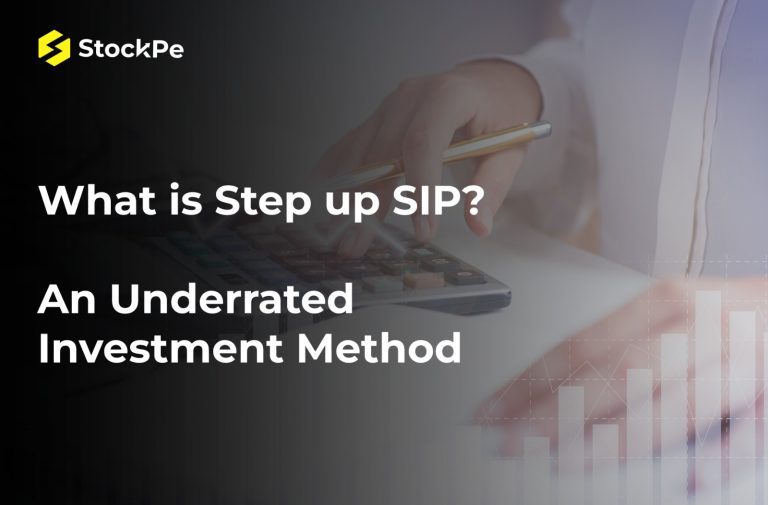The stock market world is like gambling for those who play it that way but a strategic calculation-based analysis for those who invest time, effort, and resources in it. Gaining and losing money in the stock market could happen due to various reasons. But there could be instances when your funds-deficient account balance holds you back from purchasing stocks and churning out profits. Apart from transferring money from your bank account to your trading account, what’s the multi-faceted alternate way to purchase more stocks without draining your bank reserves?

Margin funding or margin trading funding is the answer to your dilemma. Using this facility, you can use additional funds to buy your favorite stocks and consequently generate gains. In this blog, we will dive deep into the domain of margin trade funding, its features, eligibility criteria, advantages, and disadvantages. Read on!
What is Margin Trade Funding?
By paying just a marginal amount of the original value in cash or shares, the facility of Margin Trade Funding allows individuals to purchase stocks that they cannot afford otherwise. Thus, margin trading refers to a special type of collateral-backed loan for leveraging positions in the market.
For exercising margin trade funding, you would require a margin-enabled trading account wherein your broker will fund your transactions that involve margin trading. When the profit earned goes higher than the margin, you will make a profit, otherwise, you would have to face a loss. In simple terms, margin funding is the deficit between the trade amount and your trading account balance. Look at the following example to get a better idea:
Suppose you have Rs. 20,000 in your trading account but you have discovered a stock having potential for huge growth in the near future. Now let’s say that the said stock is currently trading at Rs. 2,000 per share; implying that you can buy just 10 shares with your trading account balance. Here comes the facility of margin trade funding using which you can even buy 20 shares of the same stock if you wish so by requesting margin funding from your broker (assuming that your broker provides you with that much leverage). Thus, this extra Rs. 20,000 will be your margin trade funding.
What are the features of Margin Trade Funding?
The following are some salient features of margin funding:
- As per the regulations of the Securities and Exchange Board of India (SEBI), only authorized brokers can offer margin trading accounts.
- SEBI and relevant stock exchanges have already pre-defined the securities that can be margin traded.
- Investors who want to use the margin trading facility (MTF) should open an MTF account with their brokers after accepting the terms and conditions and carefully reviewing all the risks involved.
- Investors can create leveraging positions against the trading margin in the form of cash or shares as security. Moreover, the maximum limit to carry forward these positions is N+T days, wherein N refers to the total number of days the stated position can be carried forward, and T refers to the trading days.
- All the individuals who wish to use the margin trading facility have to provide an undertaking by signing their acceptance regarding all the terms and conditions that are attached to MTF.
What are the eligibility criteria for Margin Trade Funding?
The eligibility criteria for margin funding are as follows:
i. You must open a trading account with your broker to avail of the margin funding facility. This margin varies across brokers.
ii. You can use the margin funding facility once your trading account balance surpasses 50% of the net trade amount.
iii. You will be required to pay a specific sum of money while opening your margin trading account.
What are the advantages of Margin Trade Funding?
Let’s get down to the benefits of margin trade:
1. Seamless Credit
Do you dread the long paperwork you have to go through while applying for loans? Thanks to margin trade funding, you don’t have to experience that trouble each time while borrowing money from the stockbroker. The moment you settle your current debt, you instantly become eligible to apply for a new trading margin.
2. Very Low Interest Rates
As aforementioned, margin trade funding is essentially a collateral-backed loan due to which its interest rate is very low as compared to non-collateral loans (such as personal loans, credit cards, etc).
3. Asset Utilization
As your broker takes your cash or shares as collateral, you will begin to realize the true value of those assets. For example, suppose your trading account has shares worth Rs. 20,000 and your broker gives you a 4X margin, then you can use those collateralized shares for purchasing shares worth Rs. 80,000.
4. Short-term Price Movement
If you don’t have sufficient cash balance but are exploring opportunities for short-term price movement, margin funding is perfect for you as it fills the gap by offering liquidity. Margin trading saves you from those instances when you don’t wish to miss out on extremely profitable purchasing opportunities just because you are low on liquidity. As per India Infoline, MTF can offer a 20% return on equity (RoE) gain for a 5% price movement with a massive 25% margin.
5. More Flexibility
Margin trading is generally a lot more flexible than other kinds of loans due to (usually) no fixed repayment schedule and the simple maintenance margin requirement of your broker.
6. Increased Purchasing Power
As margin trading centers increase the available capital to buy more stocks and securities, as a result, purchasing power is also increased substantially. MTF acts as a blessing by allowing you to increase your buying power by 4 times and hold your trading position for up to 1 year. Therefore, rather than purchasing securities with your own money, investors enable you to purchase more securities using their capital as loan collateral.
What are the disadvantages of Margin Trade Funding?
Don’t get misguided by its advantages alone; carefully go through the following risks involved in margin trading:
1) Amplified Losses
Margin trading is not costless if you were assuming so. Brokers usually charge interest fees depending on the performance of your margin account. You must know that borrowing funds from brokers is as binding as with banks and other financial institutions. Margin funding can not only amplify profits but also intensify your losses. Investors would owe additional funds to their brokers apart from initial equity investment in case the securities purchased on margin quickly decrease in value.
2) Margin Call
When due to the depreciating equity value of securities the broker demands deposition of additional funds into their margin account, it refers to a margin call. You must prepare yourself in advance to possess this additional fund for satisfying the terms of a margin call if any arises.
3) Liquidation
In simple terms, liquidation refers to the termination of a business operation by using its assets to discharge its liabilities. If the investors fail to keep up with the terms of the margin trade agreement, brokers are entitled to file legal actions against them. Moreover, if the investor fails to meet a margin call, the broker has the right to liquidate their assets for recovering the sum.
4) Minimum Balance
Maintaining a minimum balance in your margin trade account is a rule of thumb in the world of margin funding. If your trading account balance stoops below the minimum balance, you will be immediately asked by your broker to maintain an adequate balance. If you are unable to do so, then eventually, you will have to sell some or all of your assets to maintain a minimum balance.
Have a glance at the following table for a quick look at the advantages and disadvantages of margin trade funding:
| Advantages | Disadvantages |
| Might lead to greater profits due to leverage | Might lead to greater losses due to leverage |
| Enhances purchasing power | Involves interest charges and account fees |
| Is more flexible than other kinds of loans | Might lead to margin calls that require the deposition of additional funds into the broker’s margin account |
| Might become a self-fulfilling opportunity cycle wherein collateral value and leverage opportunities increase simultaneously | Might lead to forced liquidations, eventually causing the sale of securities usually at a loss |
The volatile nature of stock markets creates uncertain situations for investors along with funding roadblocks that don’t allow them to grab promising opportunities. Margin funding is a blessing in such cases. However, as mentioned above, it comes with a unique set of risks and benefits. On one hand, margin can lead to huge gains by using debt and leverage while on the other hand, you might be forced to pay more than what you offered as collateral.
We hope this blog helped you clarify all your doubts regarding margin trade funding and all the risks and benefits attached to it. We strongly recommend doing your own research and consulting your financial advisor(s) before entering into margin funding.
FAQs
1. Is it a good choice to use the margin trade facility (MTF)?
Yes, but you should use it after in-depth research and at your own discretion since a lot of risks are also involved along with benefits.
2. What are the different charges applied for using MTF?
Usually, MTF incurs the regular equity delivery charge along with interest costs on the margin trading account.
3. Can I get my margin money back?
Yes, you could get a short-term loan by using your margin for borrowing funds against your margin account’s current worth.
4. Can the funded stocks and collaterals be combined?
No. As per SEBI guidelines, funded stocks (bought under MTF) and collaterals (used for availing MTF) are identified as two separate entities and cannot be combined.
5. What is the penalty for unsettled funds?
The penalty for unsettled funds includes penal interest, additional charges, and even (in some cases) the blocking of your margin account in case you have not paid the minimum margin.




